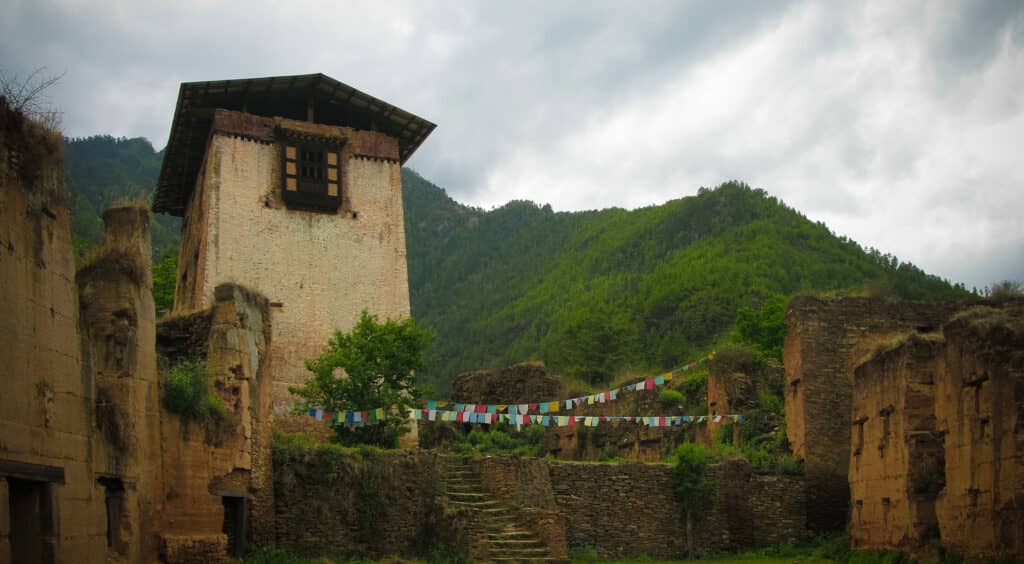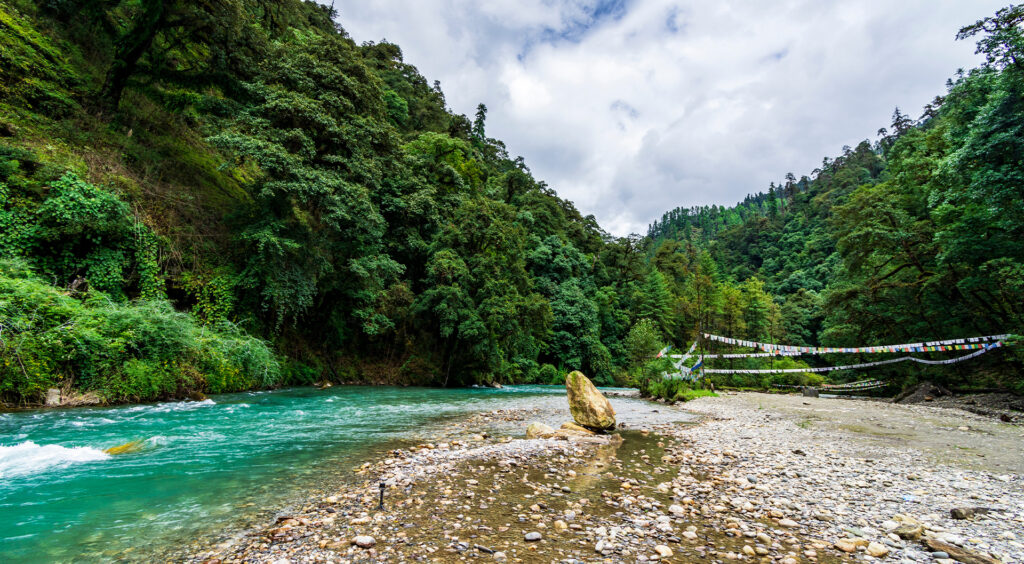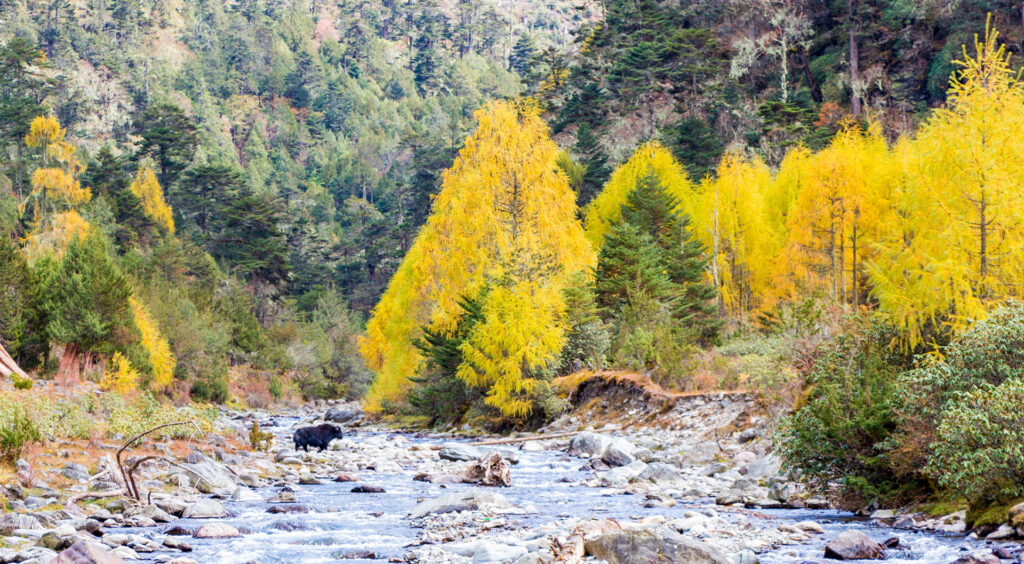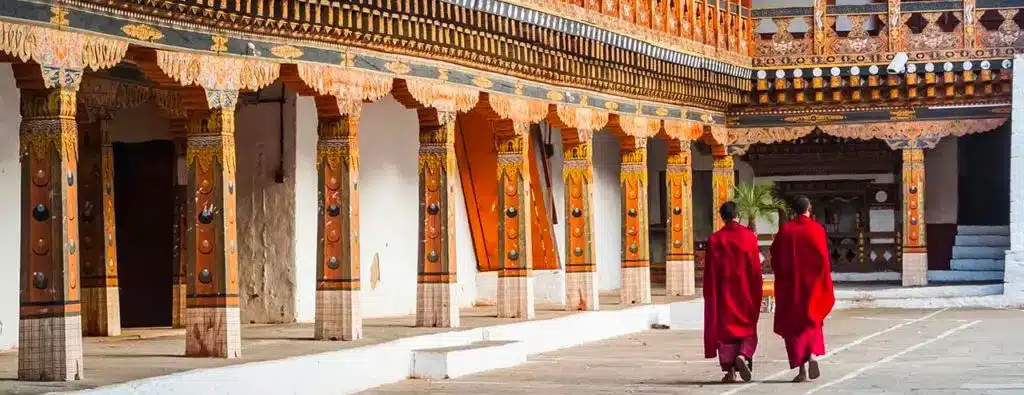The United Nations Educational, Scientific and Cultural Organization (UNESCO) has placed eight sites on the tentative list for the small Himalayan nation of Bhutan. UNESCO designates places as unique and diverse as the Pyramids of Egypt, the Great Barrier Reef in Australia and the grand cathedrals of Europe—and it is only a matter of time before the process of inscribes these sites on the World Heritage list ensuring their protection and preservation as sites of cultural and natural heritage of outstanding value to humanity.

Ancient Ruin of Drukgyel Dzong
The best example of a fortified Dzong built in the 17th century, the ancient ruin of Drukgyel Dzong is one of the most beautiful and famous archaeological sites in Bhutan. Situated on a ridge in the upper Paro valley, the ruins of the Dzong continue to be protected as an important monument linking people of Bhutan with the great events that contributed in maintaining sovereignty of the country. It is said that four principal defense forts were built during the time guarding the approach from Tibet. Drukgyel Dzong is one of these forts with well-preserved original features of a defensive structure, as the other forts have been adapted for administrative offices or residence for monks. The massive masonry walls built on the steep natural slope equipped with various devices to beat up and ambush enemies demonstrate great degree of creativity and craftsmanship of the people during the period.
Bumdeling Wildlife Sanctuary
Located in the northeastern part of Bhutan, the Bumdeling conservation area shares its international boundary with Tibetan and India. An Eastern Himalayan ecoregion with a wide range of ecosystems ranging from broadleaved forest to Alpine meadows, it displays Pine forest, Evergreen oak forest, Cool broad-leaved forest, Bamboo thickets, Alder forest, Warm broad-leaved forest and temperate pastures.
The Sanctuary is a famous domestic pilgrimage site due to significant cultural and religious sites like Singye Dzong, Risumgonpa, Pamaling, Dechenphodrang, Gonpa Karp, Lhakhang karp and Sangay Lodrou—all holy places linked to Guru Rinpochoe, the second Buddha and the most revered figure in Buddhism. The valley’s lush green habitat is also one of the two major winter roosting habitat for the globally endangered Black Necked Crane, categorized as vulnerable, which migrate from the Tibetan plateau in order to avoid the harsh winter.
Dzongs (Punakha Dzong, Wangdue Phodrang Dzong, Paro Dzong, Trongsa Dzong and Dagana Dzong)
The center of temporal and religious authorities, a Dzong in Bhutan is a complex of fortified buildings which serve as a principal seat of a Buddhist school. Most of the Dzongs were built here as strategic footholds for gaining influence of a particular school of Buddhism. The histories of the listed Dzongs reflect the dynamism of Bhutanese history and culture since the unification of the country. Many important historical events have taken place in these Dzongs, and they are living witness to the successive social development and cultural evolution of the country. A large number of national treasures, including the remains of holy men, are also housed within their walls.

Located in northwestern Bhutan, Jigme Dorji National Park is aptly called “the trekker’s paradise.” The second largest natural preserve in the country it was established in 1974 as a wildlife sanctuary and is the only park in the world where the Royal Bengal Tiger (Panthera tigris tigris) meets the Snow leopard (Uncia uncia). Home to many globally endangered species of flora and fauna, such as Snow leopard and Himalayan musk deer, the semi-nomadic community of the Layap culture is also preserved in the park. Laya have distinctive culture and dialect, living inside the park as pastoralists practicing subsistence farming. Here you will experience serene alpine meadows, Himalayan peaks, alpine lakes of varying colors, herds of blue sheep grazing alongside yaks, lush forests, waterfalls and rivers.
Royal Manas National Park
One of 10 major global biodiversity hot spots, Royal Manas National Park was maintained as a game sanctuary for many years prior to being notified as wildlife sanctuary in 1966. Representing tropical and sub-tropical ecosystems, it intersects with swaths of grassland and wide riverbeds, connecting multiple other preserved habitats so that they can be protected in a single reserve. The park harbors several species of endangered and global importance such as the Royal Bengal Tiger, Indian Rhinoceros (Rhinoceros unicornis), Pygmy hog (Sus Salvanius), Asian Elephant (Elephas maximus), Asiatic water buffalo (Bubalus bubalis) and more.
Sacred Sites of Phajo Drugom Zhigpo
The multiple sites comprised under this single heading are the places blessed by Phajo Drugom Zhigpo, who travelled to Bhutan from Tibet in the 13th century, introducing to Bhutan the Drukpa-Kagyud Buddhist tradition. These sacred sites have played crucial roles in the continuity and evolution of the unique Bhutanese culture and traditions as key footholds during the unification of the country. The sites also include the Drukpa-Kagyud School established by Phajo Drugom Zhigpo and his descendants in the different regions of the western Bhutan.

Sakteng Wildlife Sanctuary
Encompassing 740 square kilometers in the remotest part of the country, this park is popularly known as the “Paradise of Rhododendrons” has a total of 35 species of rhododendrons growing in the wild. Harbored here are globally threatened and endangered species like the Red Panda, Himalayan Serow, Wild Dog, Common Leopard, Capped Langur, Himalayan Black Bear, Musk Deer, and Jungle Cat, as well as 147 species of bird species. The peoples living in the park are semi-nomadic and use the land for the cattle to graze. There is also a community of semi-nomads, popularly called Brokpas, who live by and practice age-old customs with the main livelihood of yak rearing and subsistence farming.
Tamzhing Monastery
The original home of unique sacred dances that are celebrated during traditional Tshechu festivals throughout Bhutan, Tamzhing Monastery is considered vital as these dances are strongly associated to the living cultural tradition of Bhutan. Built in 1501 by Pema Lingpa—the great “Treasure Revealer,” an important historic figure in Bhutan—this monastery is renowned for its mural paintings. Pema Lingpa is known for instituting several religious dances and for his skills in various arts and crafts. Established in place where Guru Rinpoche (Padmasambhava) had meditated, the monastery has continued to be looked after by the descendants of Pema Lingpa. His dances continue to this day as his legacy, practiced among the monks and local communities.

